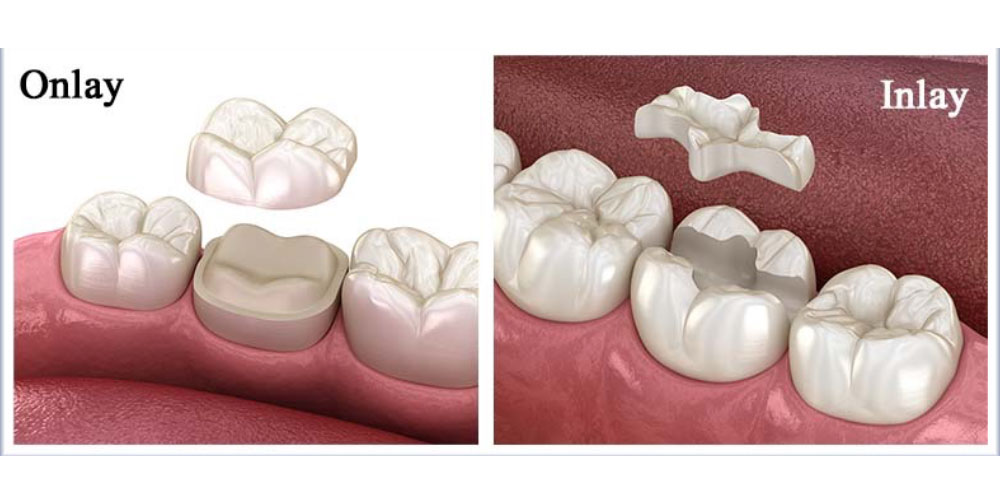
Inlays, Onlays
Usually, fillings are used to fill in small cavities, while crowns are used when a larger surface needs to be covered up. There may be situations when a filling is not enough, and a crown is too much to protect dental decay…that’s when dental inlays and onlays are used to fill in those gaps.But what is the difference between the two?
At their most basic definitions, an inlay fills in cavities and hollows in a tooth in the areas between the cusps. An onlay will not just fill in cavities in those spaces, but they can work for a larger area, including the cusps. They work similarly to crowns, but they do not cover the entire surface of the tooth. They are both made from the same materials, and they both serve the same function, but they cover different areas of the tooth to properly protect when there is a need. Several materials are available:- Gold
- Porcelain
- Plastic
- Composite Resin

